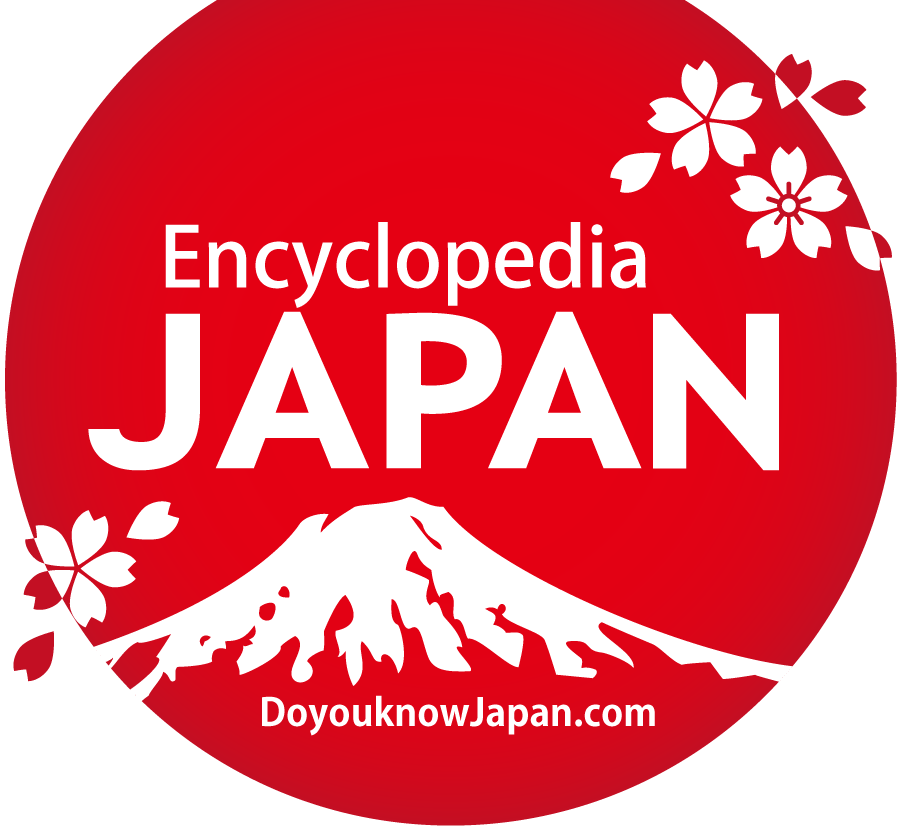
Young Geisha in Kyoto Region
The term "Maiko" refers to a young geisha or a geisha apprentice. "Maiko" is the name used in Kyoto Prefecture (also in Osaka, and Nara Prefectures, etc). It corresponds to "Hangyoku (child geisha, apprentice entertainer)" or "Oshaku (person pouring alcohol for guests or customers)" in the Kanto region. The "Maiko (舞妓)" was written as "Maiko (舞子)" in past times, and she learned customer service skills at ozashiki (banquets in which guests were attended by geisha) at the age of 9 - 12 and stood on her feet through the training of entertainment, but now no young girls can become Maiko until she graduates junior high school in accordance with the revision of the Child Welfare Act and the Labor Standards Law after the war.
Transition of Hairstyle in Training Period of Maiko
 Usually, after a 'training' period from a half to two years, Maiko wear a sash of 'Handarari,' which is half as long as darari no obi (long draping sash) as 'an apprentice' for a month and trains herself with senior geisha at a tea house. If admitted by the mistress of the geisha dwelling and the tea house association, she can debut as a new Maiko ('Misedashi'). At ozashiki and on the stage both geisha and maiko are heavily-powdered with Shironuri (white makeup), but while a geisha usually wears a wig, Maiko dresses her hair in traditional Japanese style and wears a gorgeous ornate hairpin, tsumami-kanzashi (a decorative hair pin) featuring something like flowers of each season. The hair style of Maiko at the early stage is 'wareshinobu,' which turns to be 'Ofuku' in a few years later, and 1 - 4 weeks before erigae (promoted to a full-fledged geisha) she dresses 'sakko fashion (Maiko's hairstyle)' and puts teeth black (she does not paint eyebrows, which can be regarded as the custom of Hangempuku (attaining womanhood informally) continuing still now).
Usually, after a 'training' period from a half to two years, Maiko wear a sash of 'Handarari,' which is half as long as darari no obi (long draping sash) as 'an apprentice' for a month and trains herself with senior geisha at a tea house. If admitted by the mistress of the geisha dwelling and the tea house association, she can debut as a new Maiko ('Misedashi'). At ozashiki and on the stage both geisha and maiko are heavily-powdered with Shironuri (white makeup), but while a geisha usually wears a wig, Maiko dresses her hair in traditional Japanese style and wears a gorgeous ornate hairpin, tsumami-kanzashi (a decorative hair pin) featuring something like flowers of each season. The hair style of Maiko at the early stage is 'wareshinobu,' which turns to be 'Ofuku' in a few years later, and 1 - 4 weeks before erigae (promoted to a full-fledged geisha) she dresses 'sakko fashion (Maiko's hairstyle)' and puts teeth black (she does not paint eyebrows, which can be regarded as the custom of Hangempuku (attaining womanhood informally) continuing still now).
 Maiko is a Symbol of Kyoto
Maiko is a Symbol of Kyoto
Many Maiko are promoted to full-fledged geisha around the age of 20. In accordance with the public stance that she is an apprentice because she is young, Maiko surely wears a long-sleeved kimono pulled in a tuck at the shoulders and sleeves. Since Maiko wear gaudy costumes such as Pokkuri (Koppori or 'Okobo' in Kyoto, girl's lacquered wooden clogs) and darari no obi, it could be said that Maiko is a more representative figure at red-light districts in Kyoto and vicinity, rather than geisha. Maiko is mainly in charge of dancing at ozashiki and performs the dancing of Kyomai Inoue school in Gion Kobu district and other dancing such as the Wakayagi school in other districts. She is trained to use the Kyoto dialect without regard to her origin, and consequently, Maiko is often treated as if she is a symbol of Kyoto.
Change of Maiko Traditions in Contemporary Japan
 The main business is entertainment at a tea house, but recently other business such as TV appearance, visiting care facilities or hospitals and going abroad are increasing. The red-light district which was a closed space of 'No first-time customers' seemed to have gradually opened its doors to outsiders. In fact, it is said that some geisha dwellings which have no Maiko are recruiting applicants for Maiko through the Internet. At present it is the five red-light districts of Gion Kobu, Miyagawa-cho, Gion Higashi, Ponto-cho, and the Kamishichiken districts, where there are Maiko in Kyoto. The number of applicant for Maiko is increasing, partly because of the recent boom. However, a girl who becomes a disciple of Maiko only because of her yearning feelings often resigns, because she cannot bear the old-fashioned severe training of the feudalistic red-light district. Therefore, it is future task how to keep highly qualified Maiko and geisha in the red-light districts.
The main business is entertainment at a tea house, but recently other business such as TV appearance, visiting care facilities or hospitals and going abroad are increasing. The red-light district which was a closed space of 'No first-time customers' seemed to have gradually opened its doors to outsiders. In fact, it is said that some geisha dwellings which have no Maiko are recruiting applicants for Maiko through the Internet. At present it is the five red-light districts of Gion Kobu, Miyagawa-cho, Gion Higashi, Ponto-cho, and the Kamishichiken districts, where there are Maiko in Kyoto. The number of applicant for Maiko is increasing, partly because of the recent boom. However, a girl who becomes a disciple of Maiko only because of her yearning feelings often resigns, because she cannot bear the old-fashioned severe training of the feudalistic red-light district. Therefore, it is future task how to keep highly qualified Maiko and geisha in the red-light districts.

 There were otoko geisha (male geisha) and onna geisha (female geisha) in the Edo Period. Onna geisha were only seen in Edo (modern Tokyo), Kyoto-Osaka, and Nagasaki Prefecture during the Edo Period. For example, in Osaka, geisha always referred to male and geiko meant female. In the early Meiji Period, otoko geisha disappeared and, thereafter, geigi was referred to as geisha in Osaka and geiko in Kyoto. Today, geisha may have a boyfriend or lover but do not provide sexual service for money.
There were otoko geisha (male geisha) and onna geisha (female geisha) in the Edo Period. Onna geisha were only seen in Edo (modern Tokyo), Kyoto-Osaka, and Nagasaki Prefecture during the Edo Period. For example, in Osaka, geisha always referred to male and geiko meant female. In the early Meiji Period, otoko geisha disappeared and, thereafter, geigi was referred to as geisha in Osaka and geiko in Kyoto. Today, geisha may have a boyfriend or lover but do not provide sexual service for money.

 Name Variety in each Region of Japan
Name Variety in each Region of Japan


 Usually, after a 'training' period from a half to two years, Maiko wear a sash of 'Handarari,' which is half as long as darari no obi (long draping sash) as 'an apprentice' for a month and trains herself with senior geisha at a tea house. If admitted by the mistress of the geisha dwelling and the tea house association, she can debut as a new Maiko ('Misedashi'). At ozashiki and on the stage both geisha and maiko are heavily-powdered with Shironuri (white makeup), but while a geisha usually wears a wig, Maiko dresses her hair in traditional Japanese style and wears a gorgeous ornate hairpin, tsumami-kanzashi (a decorative hair pin) featuring something like flowers of each season. The hair style of Maiko at the early stage is 'wareshinobu,' which turns to be 'Ofuku' in a few years later, and 1 - 4 weeks before erigae (promoted to a full-fledged geisha) she dresses 'sakko fashion (Maiko's hairstyle)' and puts teeth black (she does not paint eyebrows, which can be regarded as the custom of Hangempuku (attaining womanhood informally) continuing still now).
Usually, after a 'training' period from a half to two years, Maiko wear a sash of 'Handarari,' which is half as long as darari no obi (long draping sash) as 'an apprentice' for a month and trains herself with senior geisha at a tea house. If admitted by the mistress of the geisha dwelling and the tea house association, she can debut as a new Maiko ('Misedashi'). At ozashiki and on the stage both geisha and maiko are heavily-powdered with Shironuri (white makeup), but while a geisha usually wears a wig, Maiko dresses her hair in traditional Japanese style and wears a gorgeous ornate hairpin, tsumami-kanzashi (a decorative hair pin) featuring something like flowers of each season. The hair style of Maiko at the early stage is 'wareshinobu,' which turns to be 'Ofuku' in a few years later, and 1 - 4 weeks before erigae (promoted to a full-fledged geisha) she dresses 'sakko fashion (Maiko's hairstyle)' and puts teeth black (she does not paint eyebrows, which can be regarded as the custom of Hangempuku (attaining womanhood informally) continuing still now).  Maiko is a Symbol of Kyoto
Maiko is a Symbol of Kyoto The main business is entertainment at a tea house, but recently other business such as TV appearance, visiting care facilities or hospitals and going abroad are increasing. The red-light district which was a closed space of 'No first-time customers' seemed to have gradually opened its doors to outsiders. In fact, it is said that some geisha dwellings which have no Maiko are recruiting applicants for Maiko through the Internet. At present it is the five red-light districts of Gion Kobu, Miyagawa-cho, Gion Higashi, Ponto-cho, and the Kamishichiken districts, where there are Maiko in Kyoto. The number of applicant for Maiko is increasing, partly because of the recent boom. However, a girl who becomes a disciple of Maiko only because of her yearning feelings often resigns, because she cannot bear the old-fashioned severe training of the feudalistic red-light district. Therefore, it is future task how to keep highly qualified Maiko and geisha in the red-light districts.
The main business is entertainment at a tea house, but recently other business such as TV appearance, visiting care facilities or hospitals and going abroad are increasing. The red-light district which was a closed space of 'No first-time customers' seemed to have gradually opened its doors to outsiders. In fact, it is said that some geisha dwellings which have no Maiko are recruiting applicants for Maiko through the Internet. At present it is the five red-light districts of Gion Kobu, Miyagawa-cho, Gion Higashi, Ponto-cho, and the Kamishichiken districts, where there are Maiko in Kyoto. The number of applicant for Maiko is increasing, partly because of the recent boom. However, a girl who becomes a disciple of Maiko only because of her yearning feelings often resigns, because she cannot bear the old-fashioned severe training of the feudalistic red-light district. Therefore, it is future task how to keep highly qualified Maiko and geisha in the red-light districts.

 They go to the banquet that they were assigned to accompanied by menservants who carry their shamisen-bako (shamisen case). The younger geisha such as hangyoku or maiko have their hair done in shojo no mage (hairstyle for young girls) such as Momoware (hairstyle of the Meiji and Taisho era, featuring a bun resembling a halved peach) and wear furisode (long-sleeved kimono) with kataage (a shoulder tuck). Their obi (kimono sash) and obi musubi (the way the obi is put on) are different from that for the older geisha. Of these younger geisha, maiko in Kyoto are known for their darari no obimusubi and okobo (wooden footwear). Tatsumi Geisha in Fukagawa (Koto Ward), Tokyo prided themselves for looking 'natty' showing their spirit by wearing geta made of paulownia on barefoot with no tabi (Japanese socks with split toe) and haori coat.
They go to the banquet that they were assigned to accompanied by menservants who carry their shamisen-bako (shamisen case). The younger geisha such as hangyoku or maiko have their hair done in shojo no mage (hairstyle for young girls) such as Momoware (hairstyle of the Meiji and Taisho era, featuring a bun resembling a halved peach) and wear furisode (long-sleeved kimono) with kataage (a shoulder tuck). Their obi (kimono sash) and obi musubi (the way the obi is put on) are different from that for the older geisha. Of these younger geisha, maiko in Kyoto are known for their darari no obimusubi and okobo (wooden footwear). Tatsumi Geisha in Fukagawa (Koto Ward), Tokyo prided themselves for looking 'natty' showing their spirit by wearing geta made of paulownia on barefoot with no tabi (Japanese socks with split toe) and haori coat.

 Usually, clients can call geisha in to the place where they are having a banquet for the pre-arranged period of time. Specifically, when making a reservation, one can let the restaurant where their banquet will be know the length of time the geisha's service will be required and the restaurant will make arrangements according to the budget and preferences. You can of course ask for a specific geisha. It should be noted that geisha can only go to some specific restaurants and not just any restaurant. In these days, however, as the rules have been relaxed, geisha are seen at some establishments that are not part of the affiliated restaurants (and, in those cases, there may be various conditions such as a premium for geisha's service). If there is an opening for then and there, it is possible to make an arrangement for a geisha, but it is usually not done. The fee is referred to as 'Gyokudai (time charge for a geisha)' or 'Senko-dai (fee for a geisha's time)' in the Kanto region and 'Hana-dai (fee for a woman's companionship)' in the Kansai region. Senko-dai' was named for the length of time of a geisha's service which was measured by the time it took for a stick of incense to burn in times when there were no clocks. Additionally, 'shugi (goshugi)' that is something similar to gratuity is necessary. The fee for the geisha's service will be lumped together with that for food and drinks consumed and will be charged by the respective restaurant.
Usually, clients can call geisha in to the place where they are having a banquet for the pre-arranged period of time. Specifically, when making a reservation, one can let the restaurant where their banquet will be know the length of time the geisha's service will be required and the restaurant will make arrangements according to the budget and preferences. You can of course ask for a specific geisha. It should be noted that geisha can only go to some specific restaurants and not just any restaurant. In these days, however, as the rules have been relaxed, geisha are seen at some establishments that are not part of the affiliated restaurants (and, in those cases, there may be various conditions such as a premium for geisha's service). If there is an opening for then and there, it is possible to make an arrangement for a geisha, but it is usually not done. The fee is referred to as 'Gyokudai (time charge for a geisha)' or 'Senko-dai (fee for a geisha's time)' in the Kanto region and 'Hana-dai (fee for a woman's companionship)' in the Kansai region. Senko-dai' was named for the length of time of a geisha's service which was measured by the time it took for a stick of incense to burn in times when there were no clocks. Additionally, 'shugi (goshugi)' that is something similar to gratuity is necessary. The fee for the geisha's service will be lumped together with that for food and drinks consumed and will be charged by the respective restaurant. 

 However, geisha was clearly distinguished from yujo whereby the first-class geisha was supposed to pride herself in 'selling her arts and not her body' and receiving money in return for being good to her danna (customer). Many of the talented and/or beautiful geisha, however, opted for never having danna in their life time that undoubtedly had distaste for such a reality and showed their spirit in not being at customers' disposal. On the contrary to popular perception that geisha have no freedom, it seems that their freedom to fall in love with a man that they choose has long been well respected. Since the Meiji Period, geisha who support themselves with their arts have often been perceived as a sort of dream girls and there have been occasions when some magazines conducted popularity contests or postcards featuring some popular geisha were well received.
However, geisha was clearly distinguished from yujo whereby the first-class geisha was supposed to pride herself in 'selling her arts and not her body' and receiving money in return for being good to her danna (customer). Many of the talented and/or beautiful geisha, however, opted for never having danna in their life time that undoubtedly had distaste for such a reality and showed their spirit in not being at customers' disposal. On the contrary to popular perception that geisha have no freedom, it seems that their freedom to fall in love with a man that they choose has long been well respected. Since the Meiji Period, geisha who support themselves with their arts have often been perceived as a sort of dream girls and there have been occasions when some magazines conducted popularity contests or postcards featuring some popular geisha were well received.


 That geisha will become that danna-sama's mistress and danna-sama will be her best customer who will take care of her whereby establishing a relationship of trust between them. There are obvious advantages in this relationship on the geisha's side. Danna-sama, however, usually is married having his own family and, hence, there are no particular advantages to speak of. The relationship between the geisha and her danna-sama, however, includes that of the sexual nature as, after all, they are man and woman, but in principle, it is supposed to be a sound partnership. Danna-sama's advantage is that it reflects on his being a 'successful man.' He demonstrates a sophisticated generosity by 'giving that geisha so much' and 'spending so much money for her.' Since danna-sama is one of the richest men in the respective area, it can also be a means to impress people around him with his wealth. As a principle, danna-sama is supposed to strike a balance between his home and geisha, but some end up becoming bankrupt by spending too much money on geisha or by being taken advantage of by an evil geisha.
That geisha will become that danna-sama's mistress and danna-sama will be her best customer who will take care of her whereby establishing a relationship of trust between them. There are obvious advantages in this relationship on the geisha's side. Danna-sama, however, usually is married having his own family and, hence, there are no particular advantages to speak of. The relationship between the geisha and her danna-sama, however, includes that of the sexual nature as, after all, they are man and woman, but in principle, it is supposed to be a sound partnership. Danna-sama's advantage is that it reflects on his being a 'successful man.' He demonstrates a sophisticated generosity by 'giving that geisha so much' and 'spending so much money for her.' Since danna-sama is one of the richest men in the respective area, it can also be a means to impress people around him with his wealth. As a principle, danna-sama is supposed to strike a balance between his home and geisha, but some end up becoming bankrupt by spending too much money on geisha or by being taken advantage of by an evil geisha.  Danna-sama in Modern Days Japan
Danna-sama in Modern Days Japan







